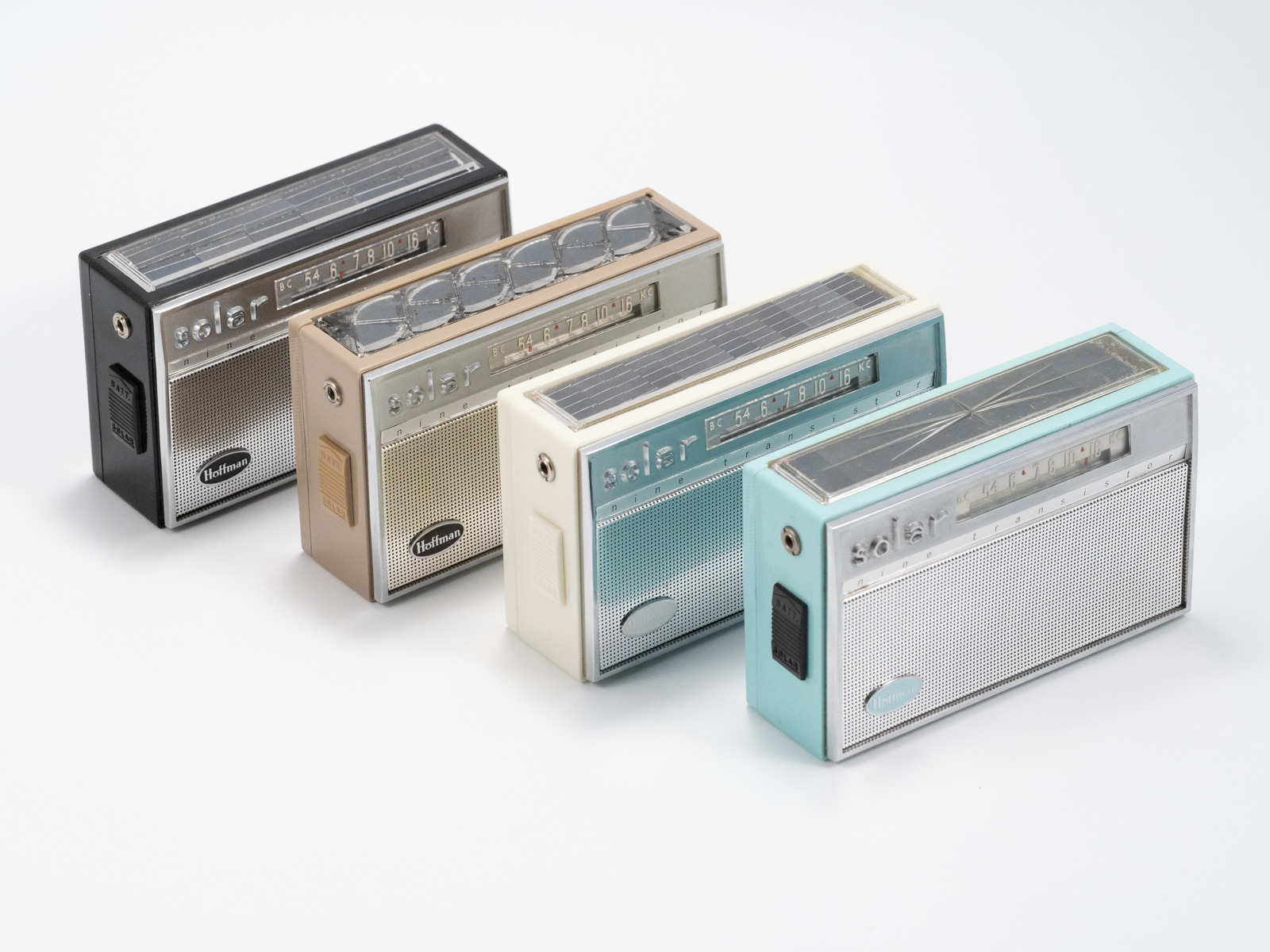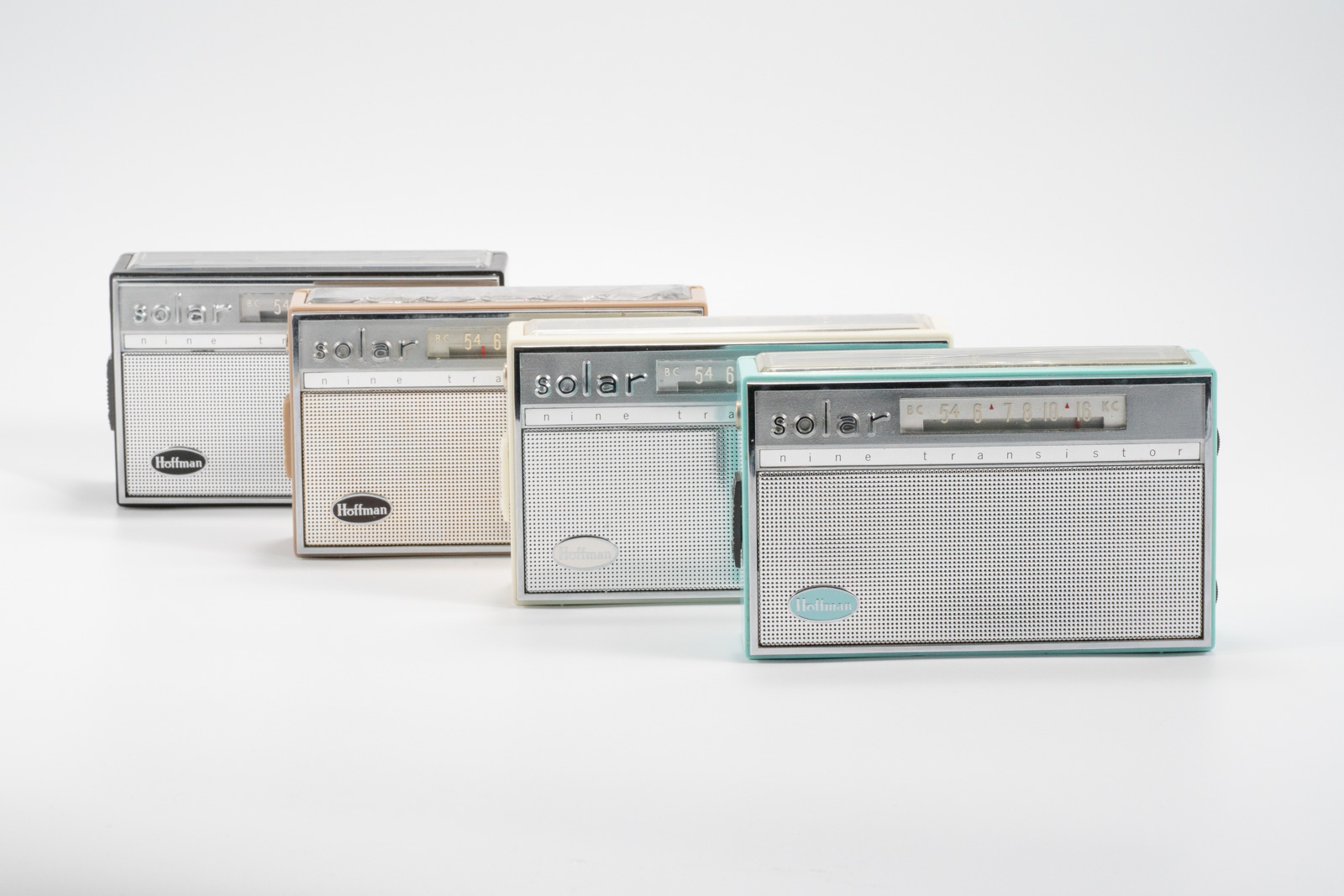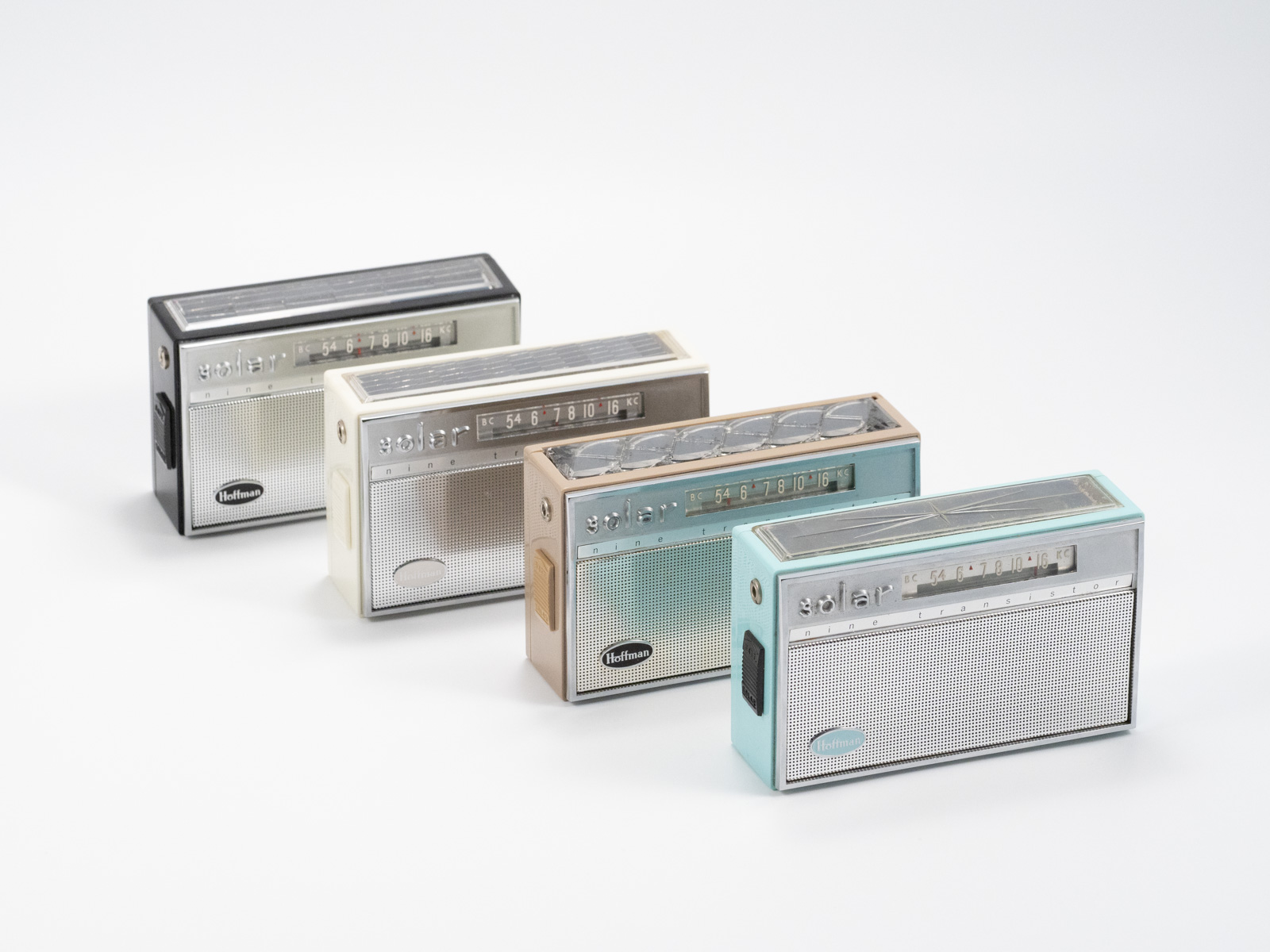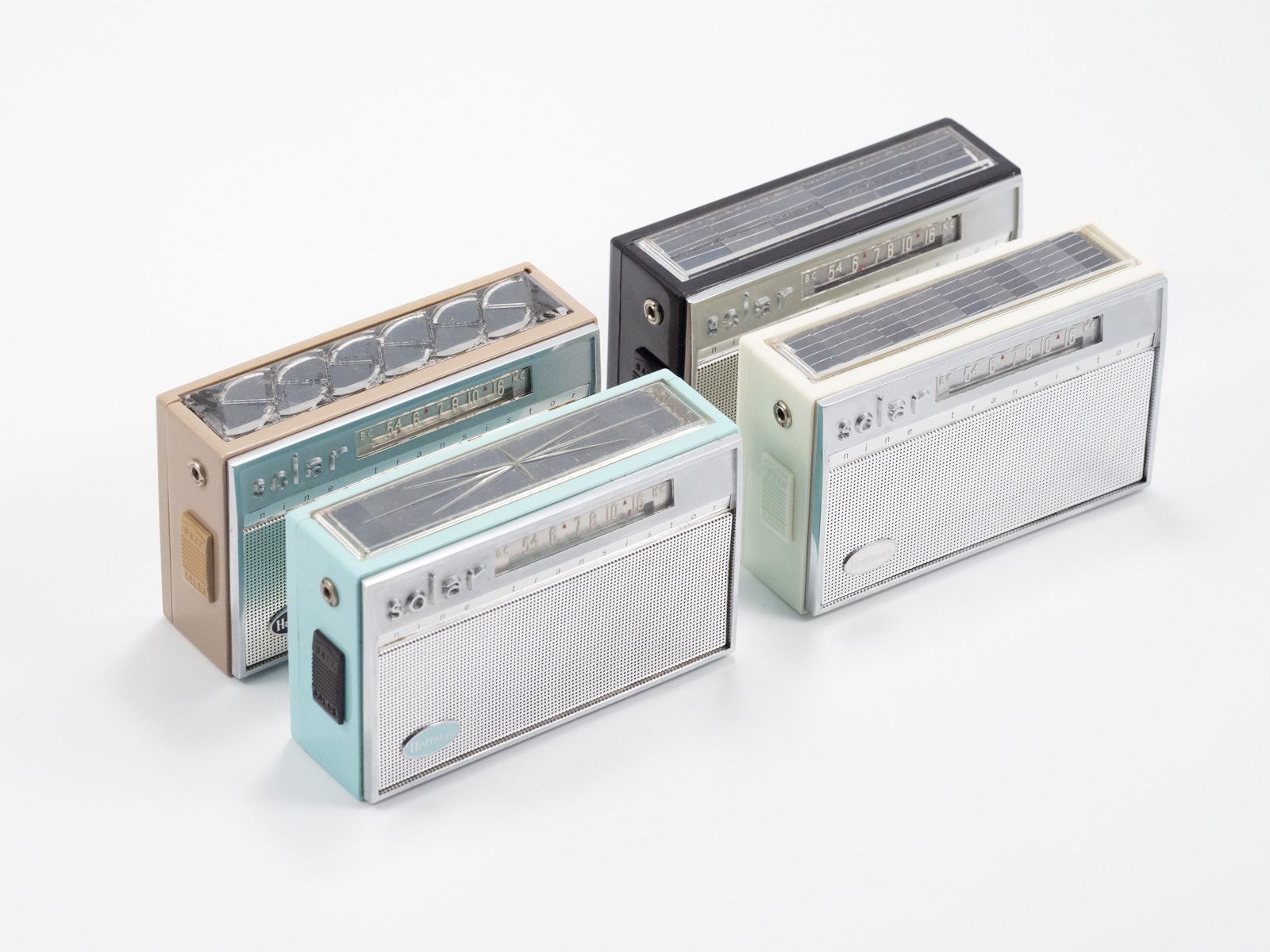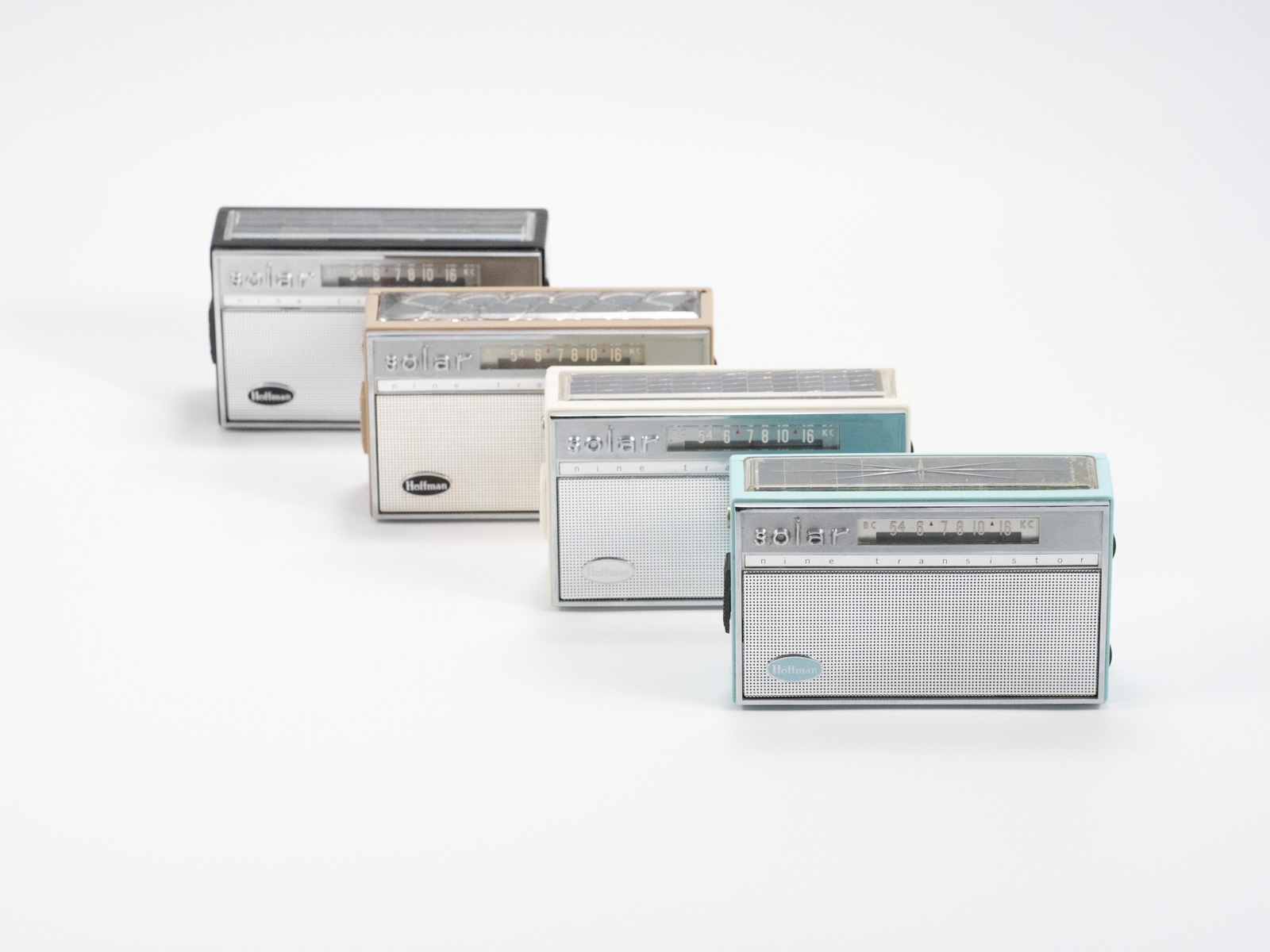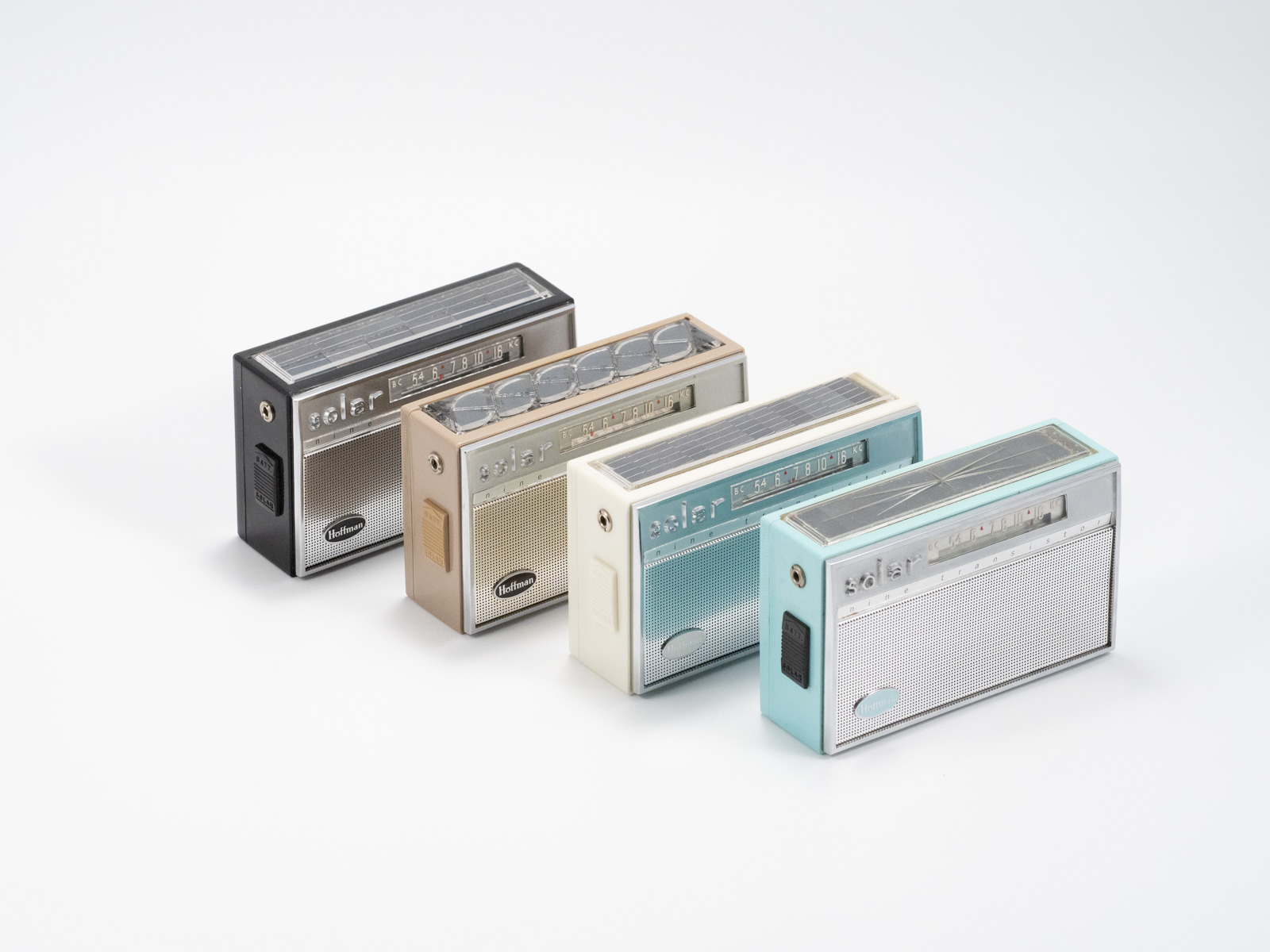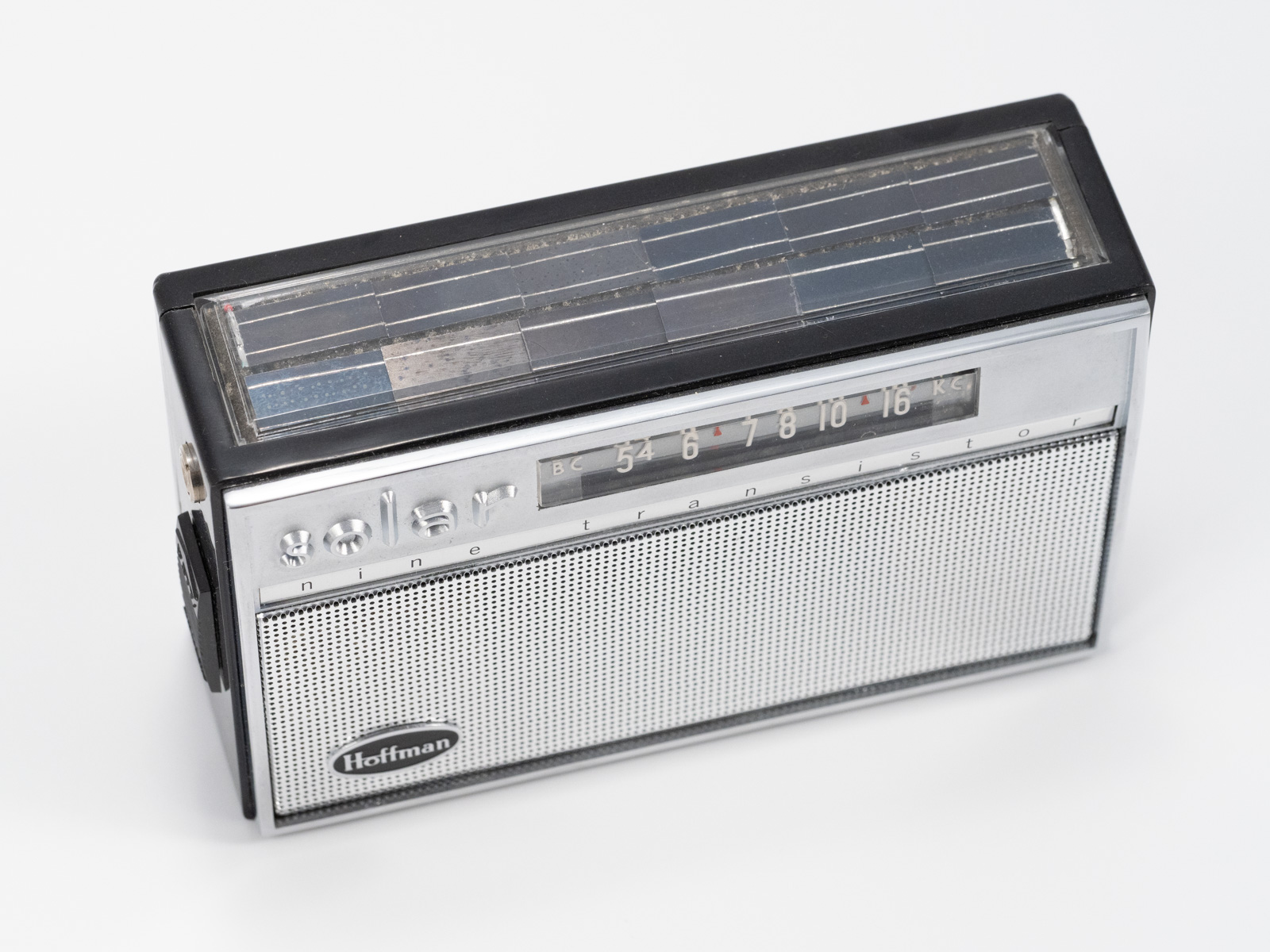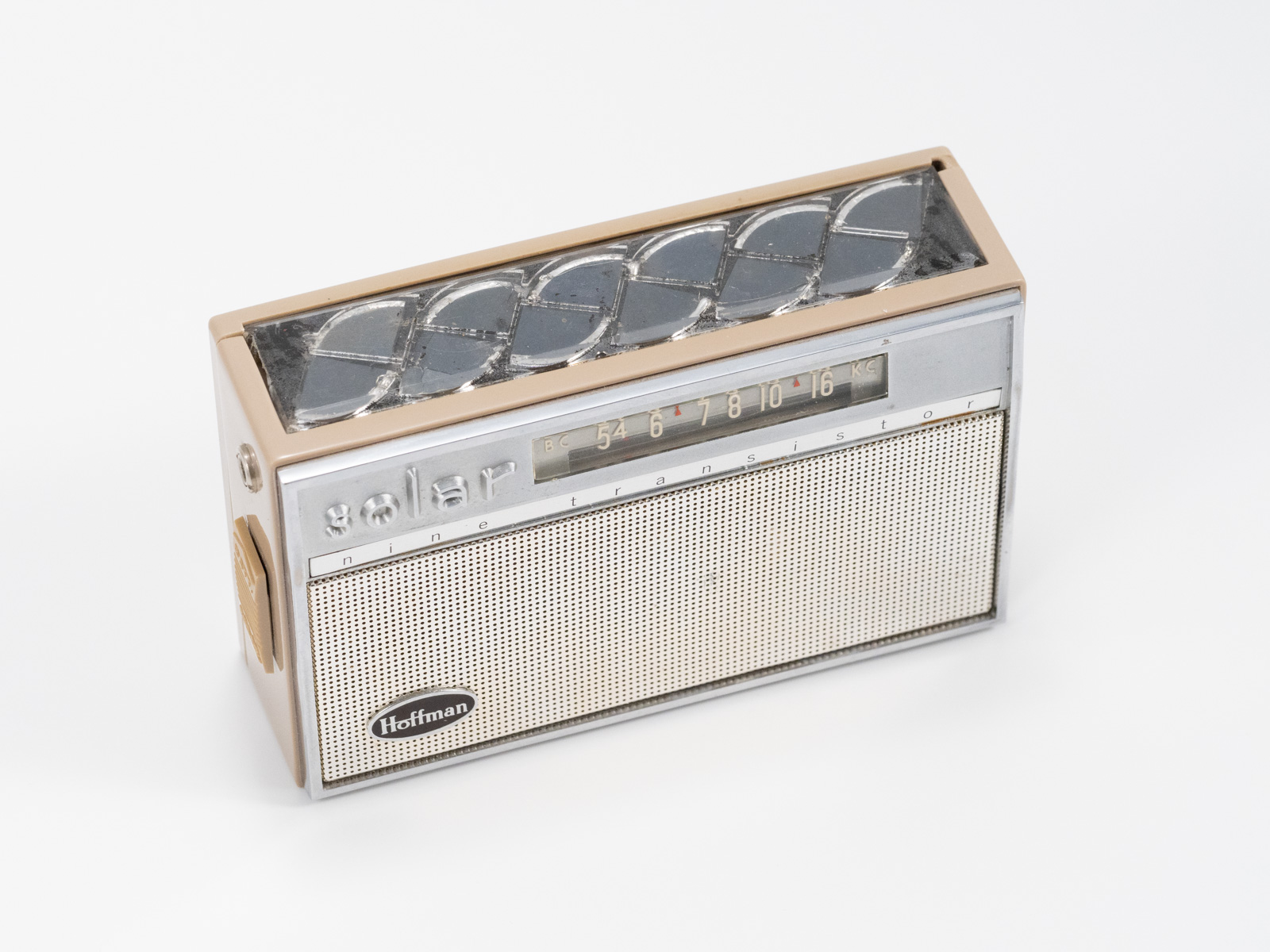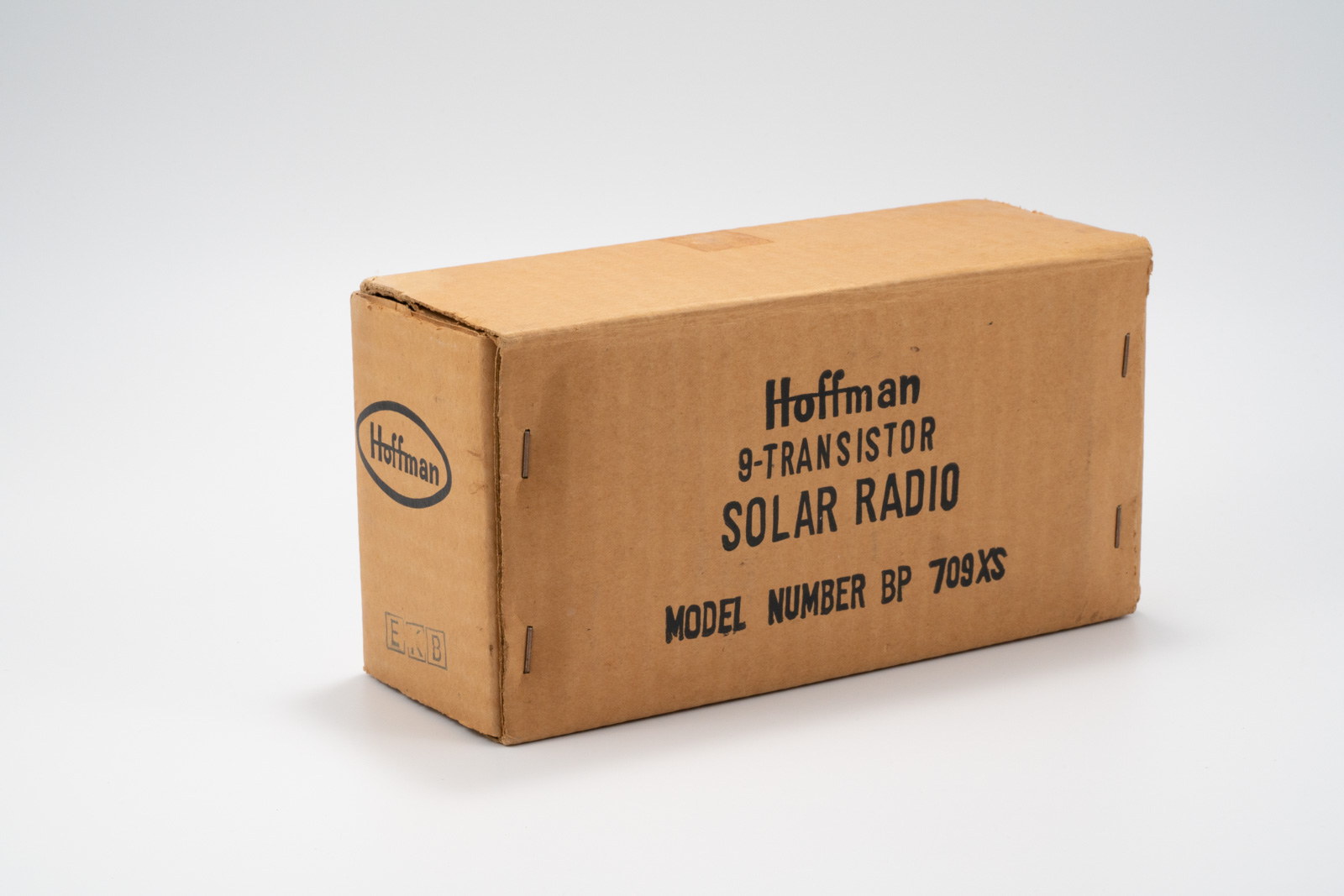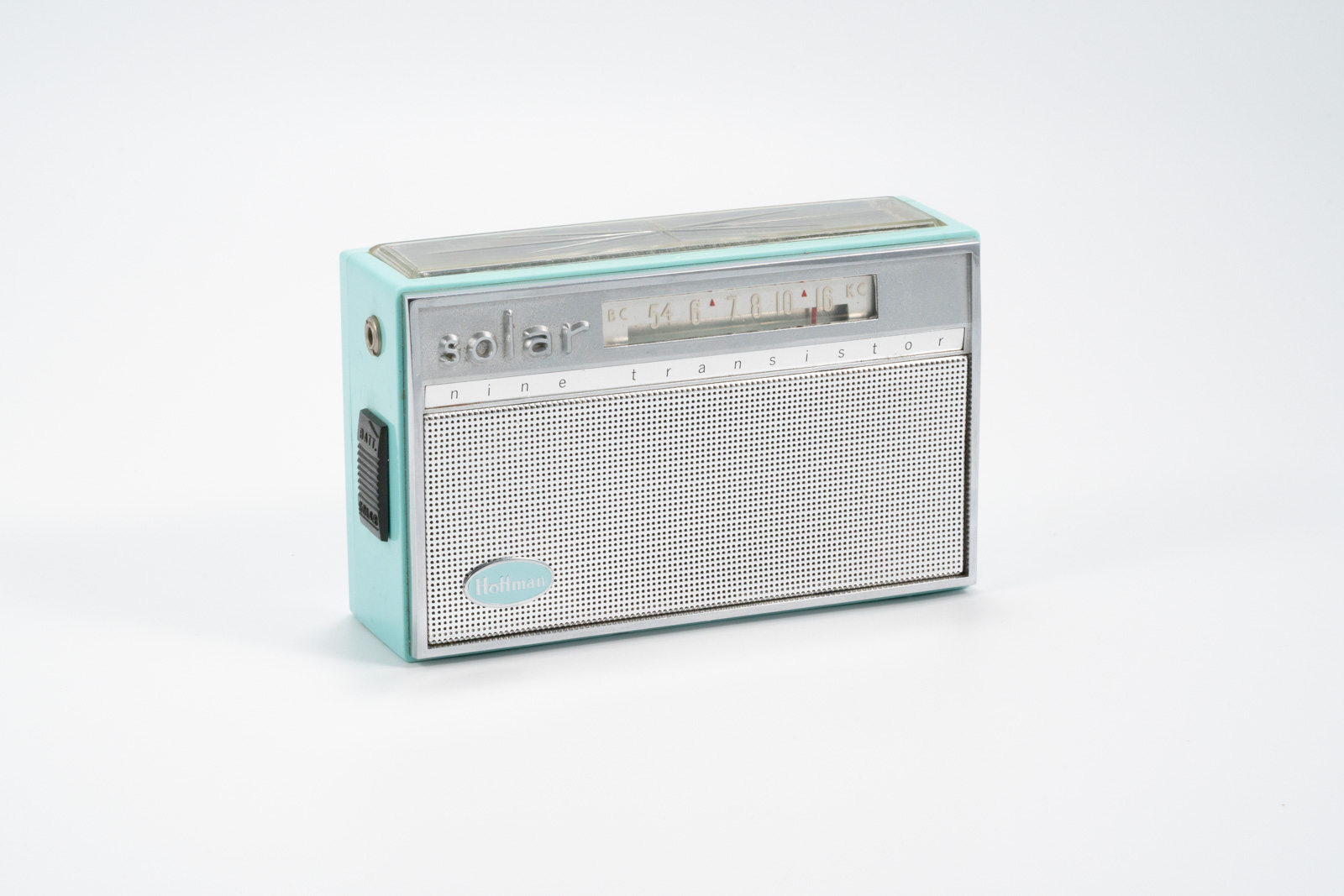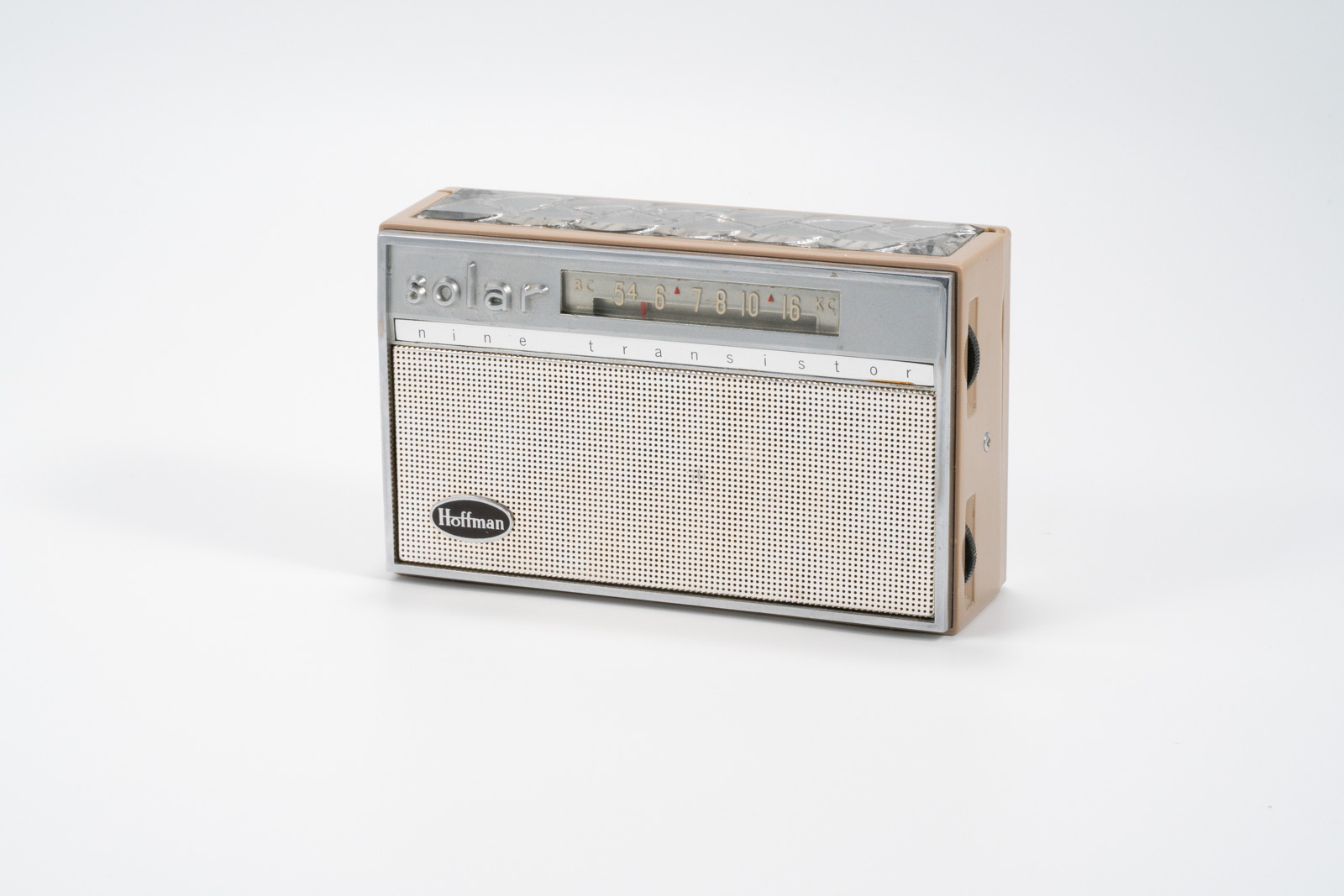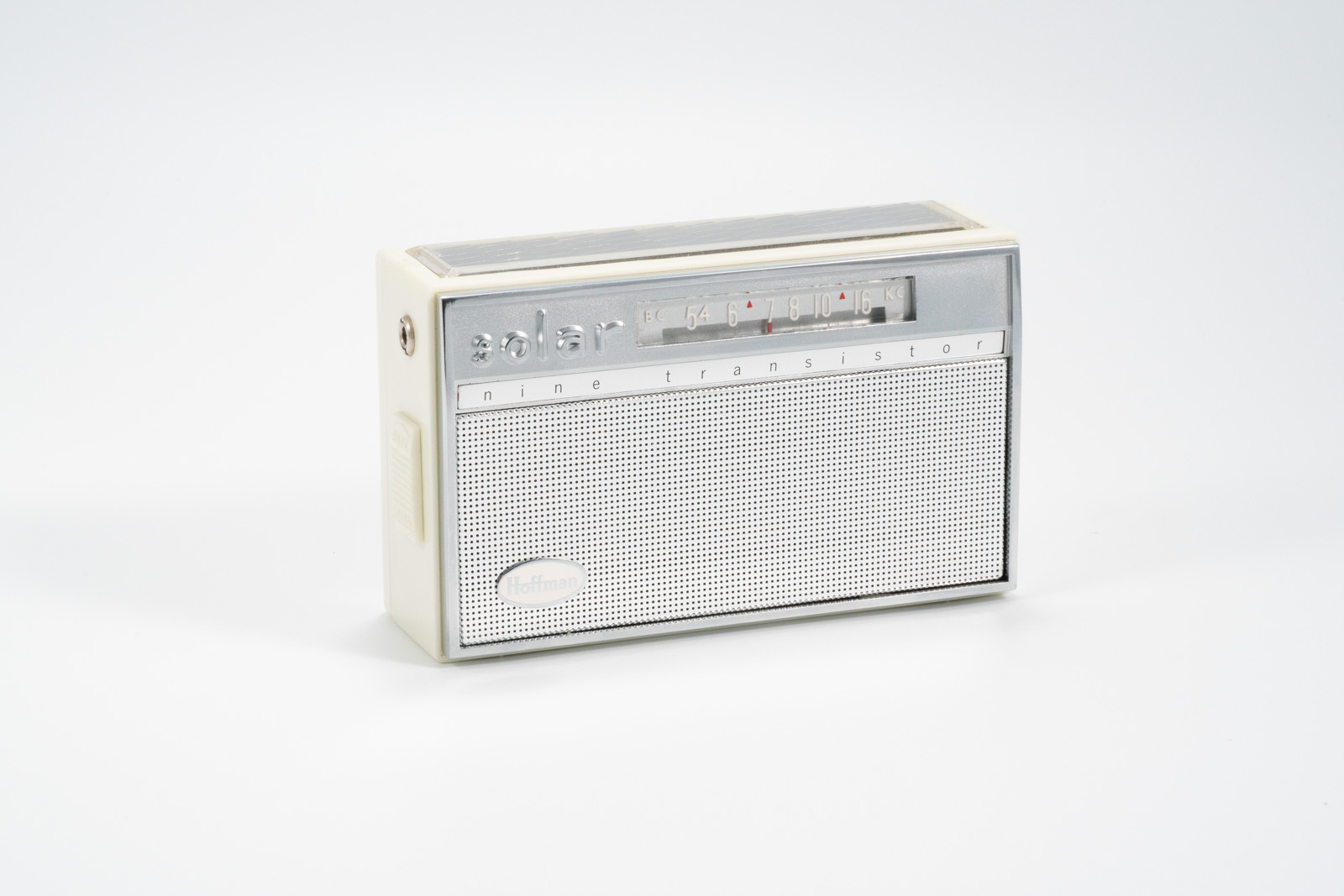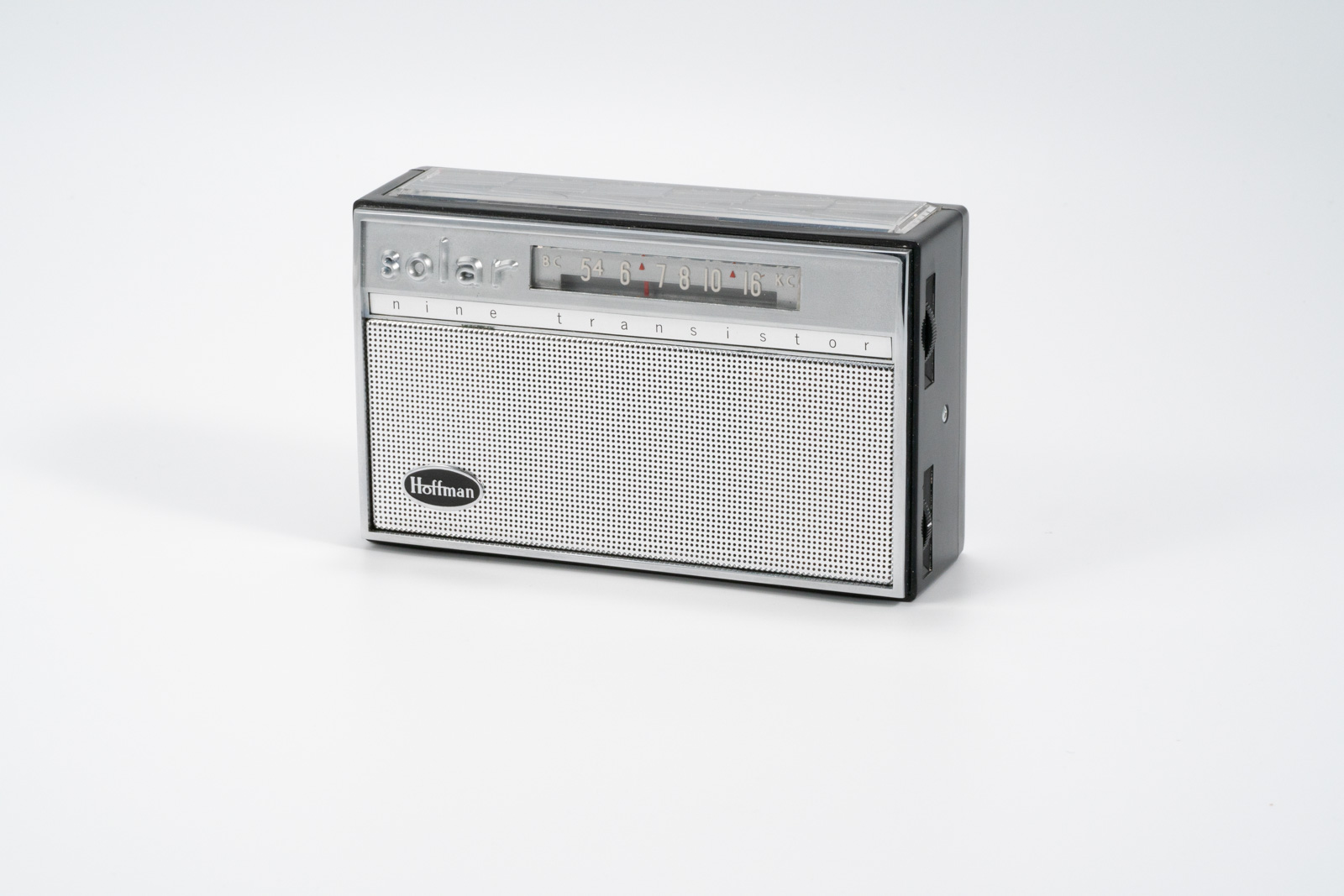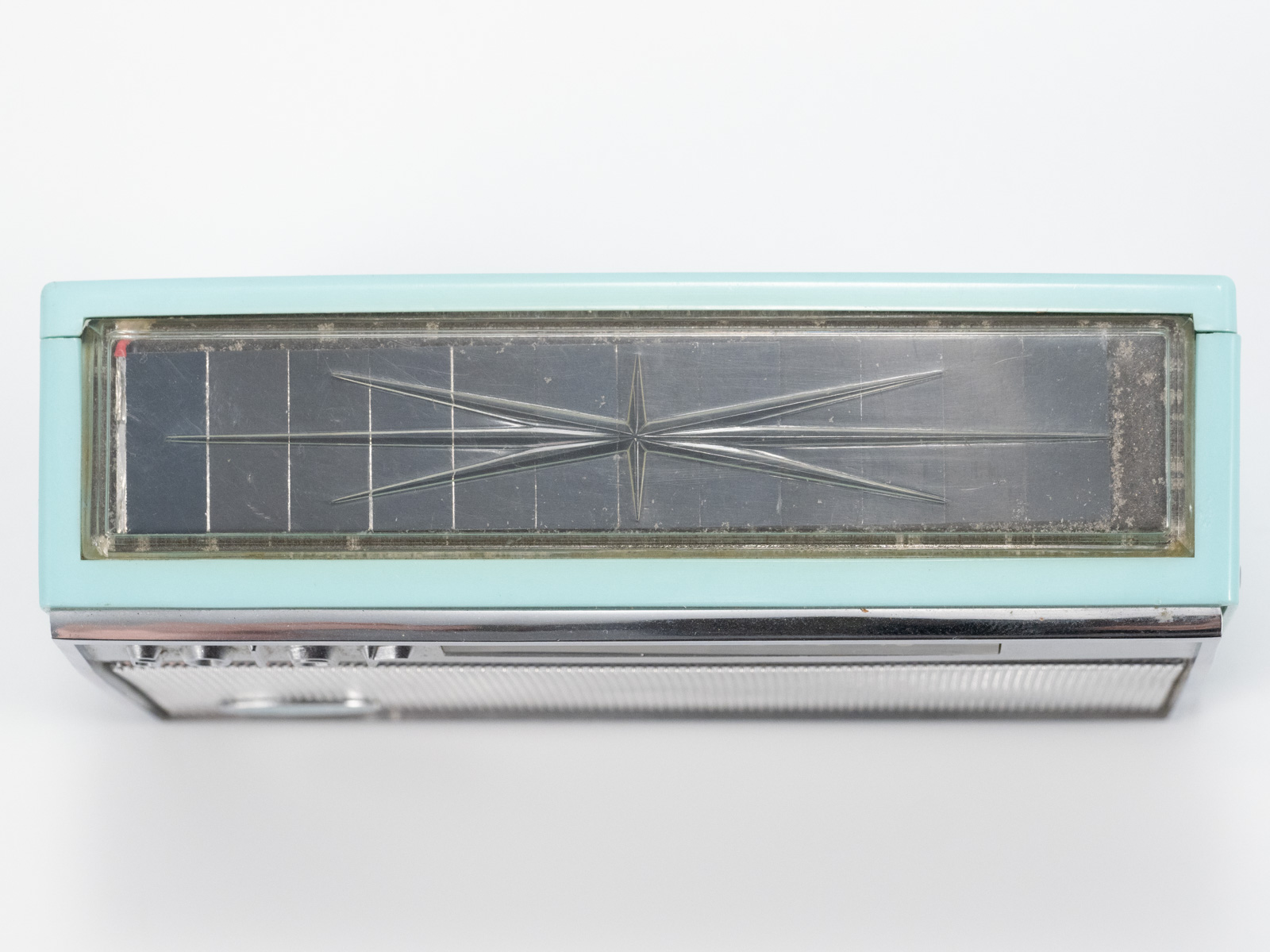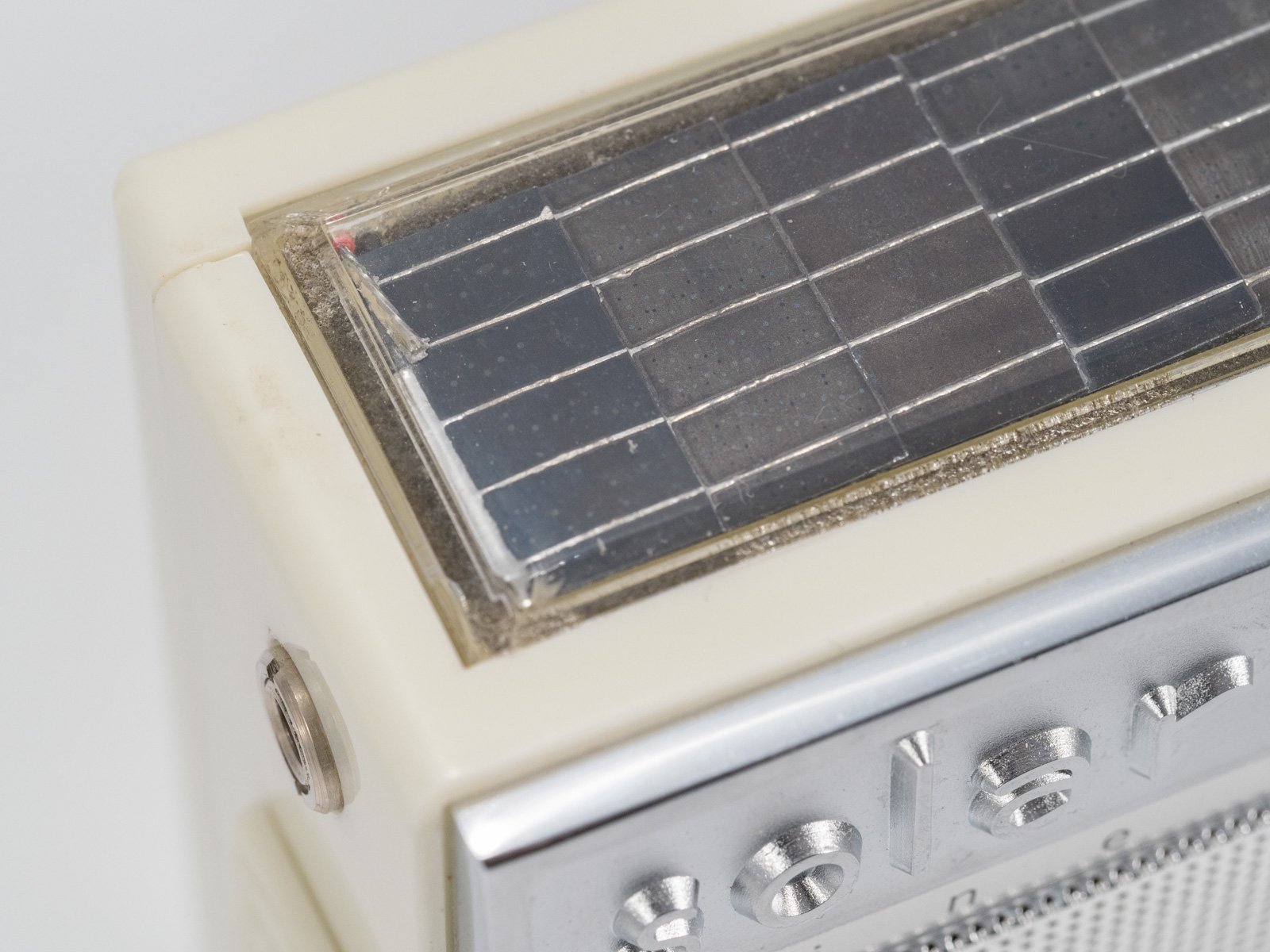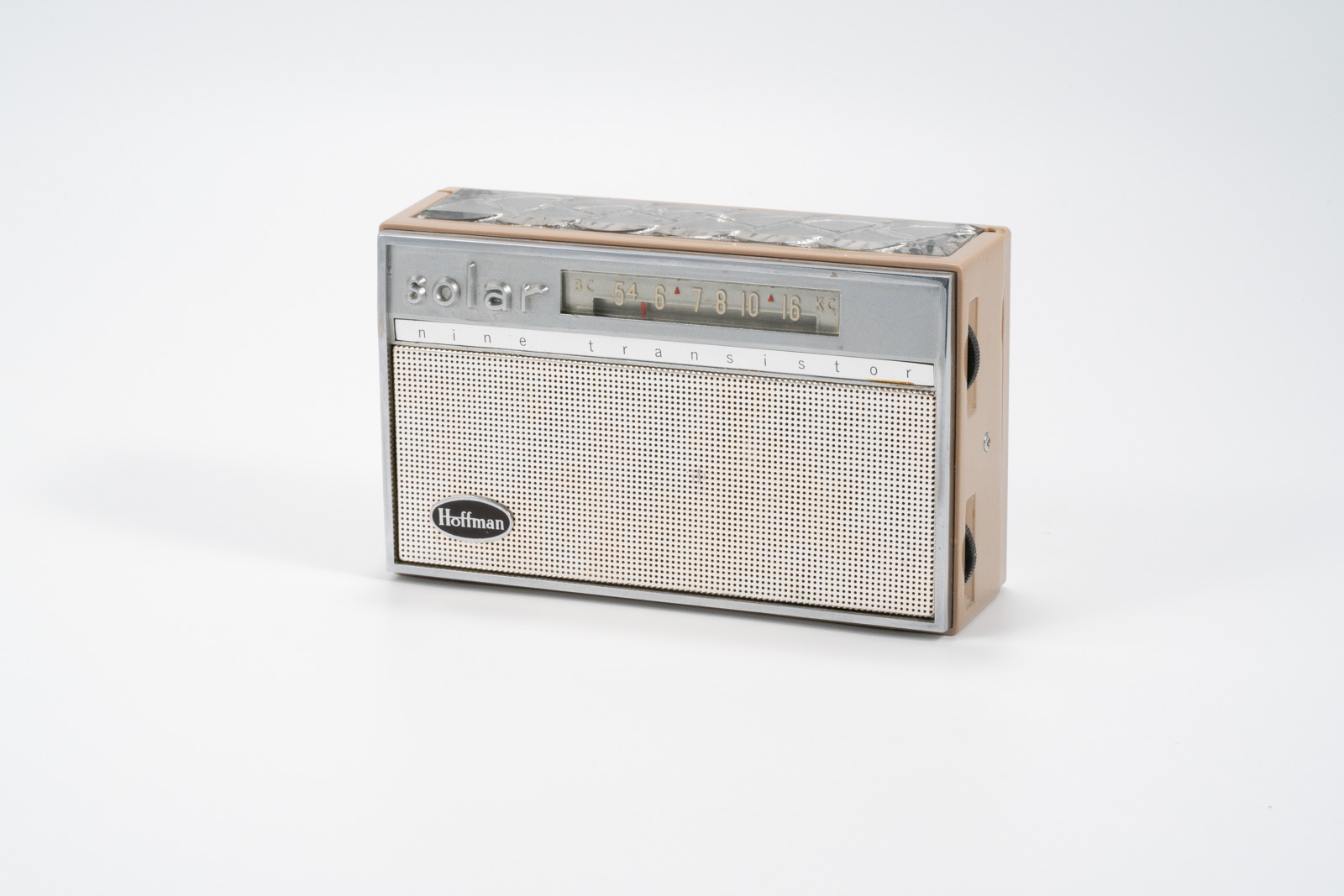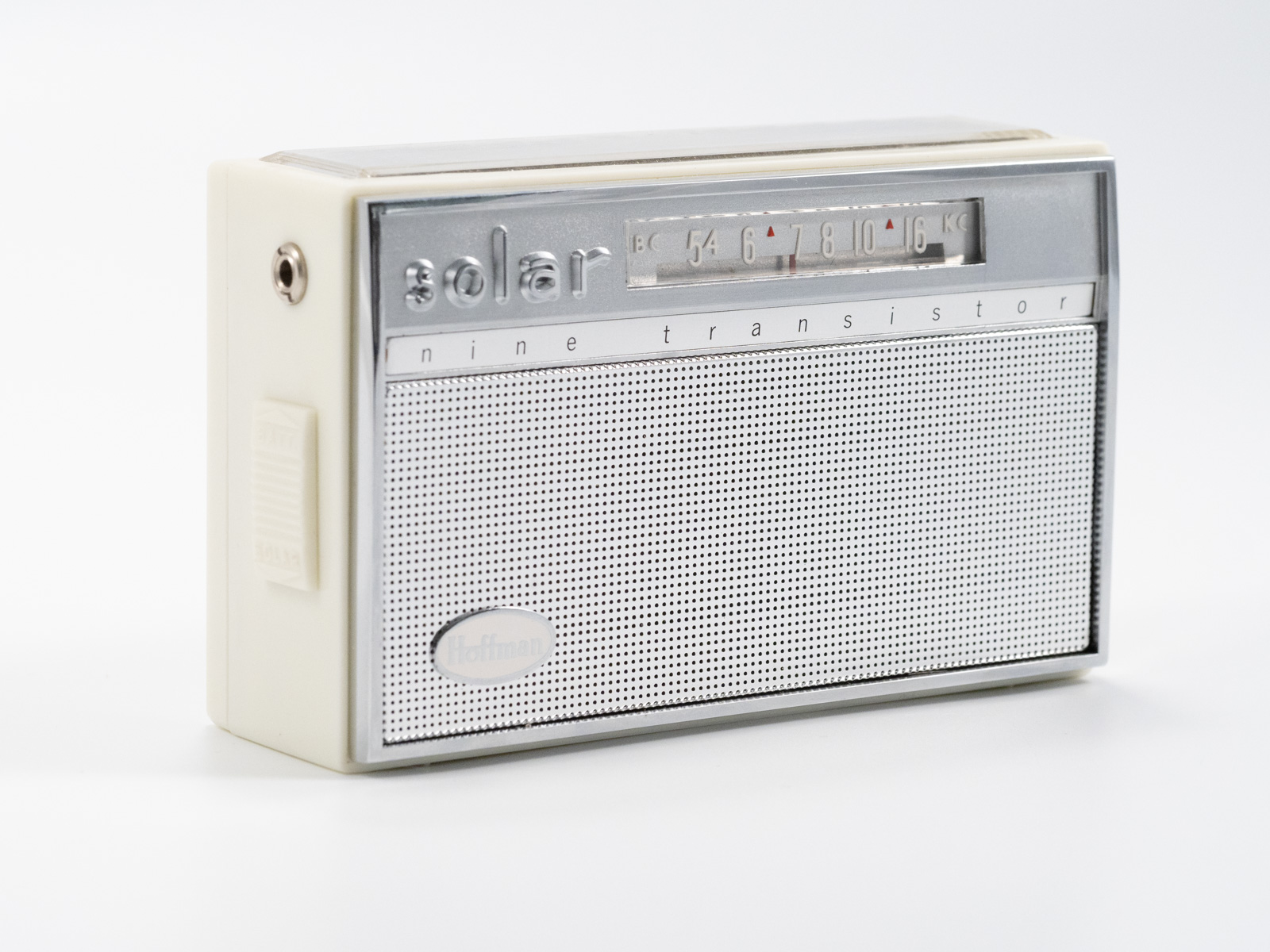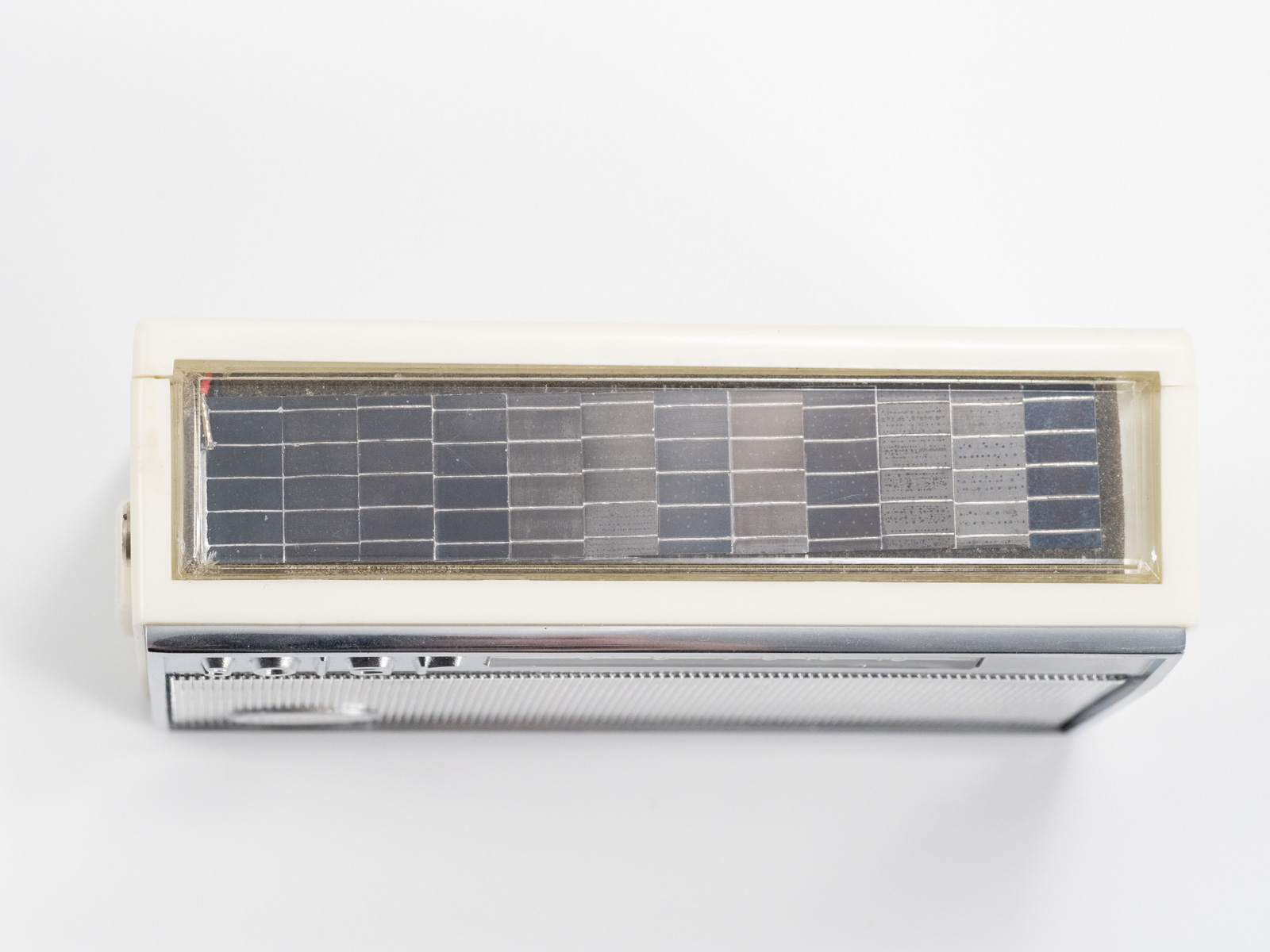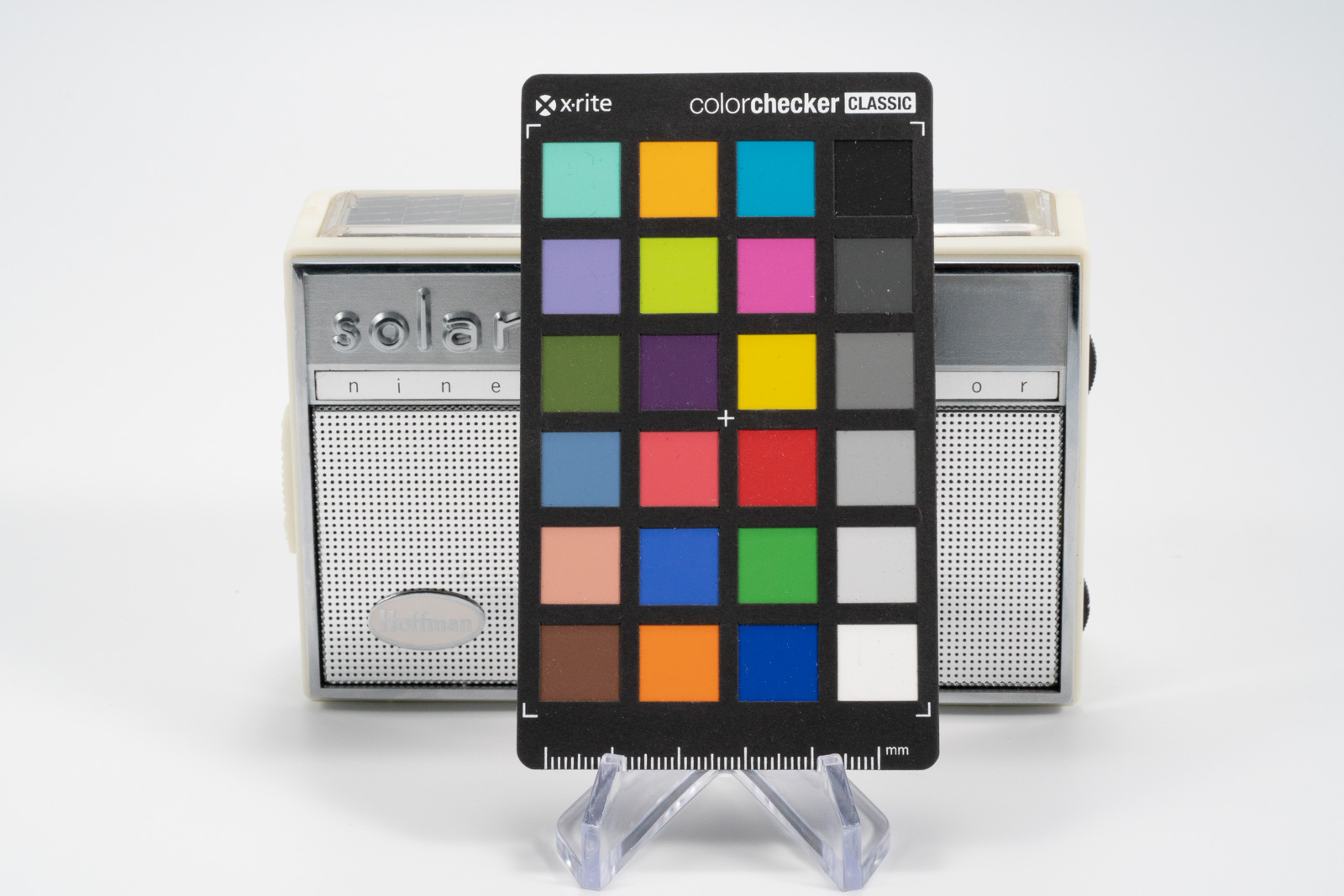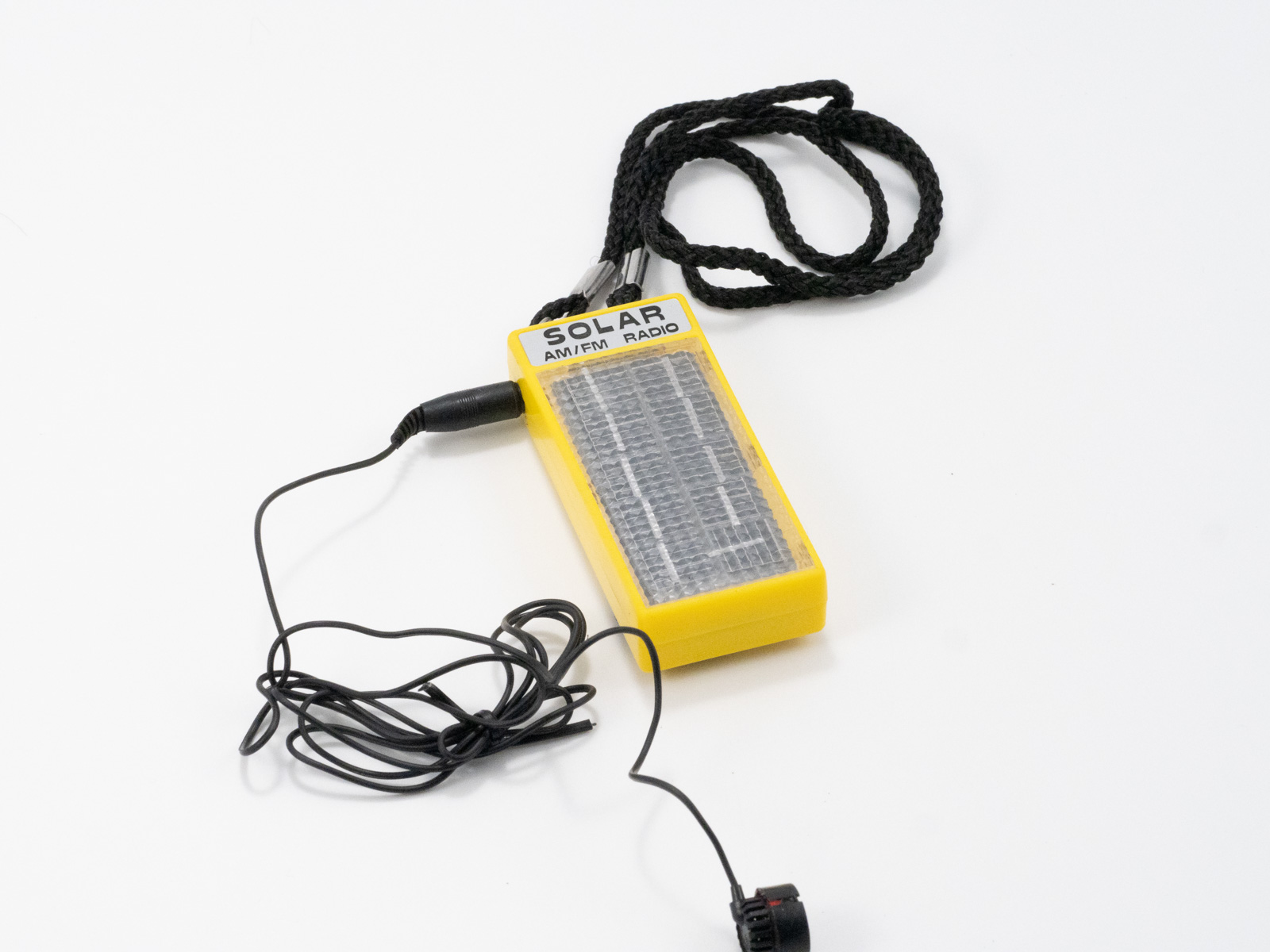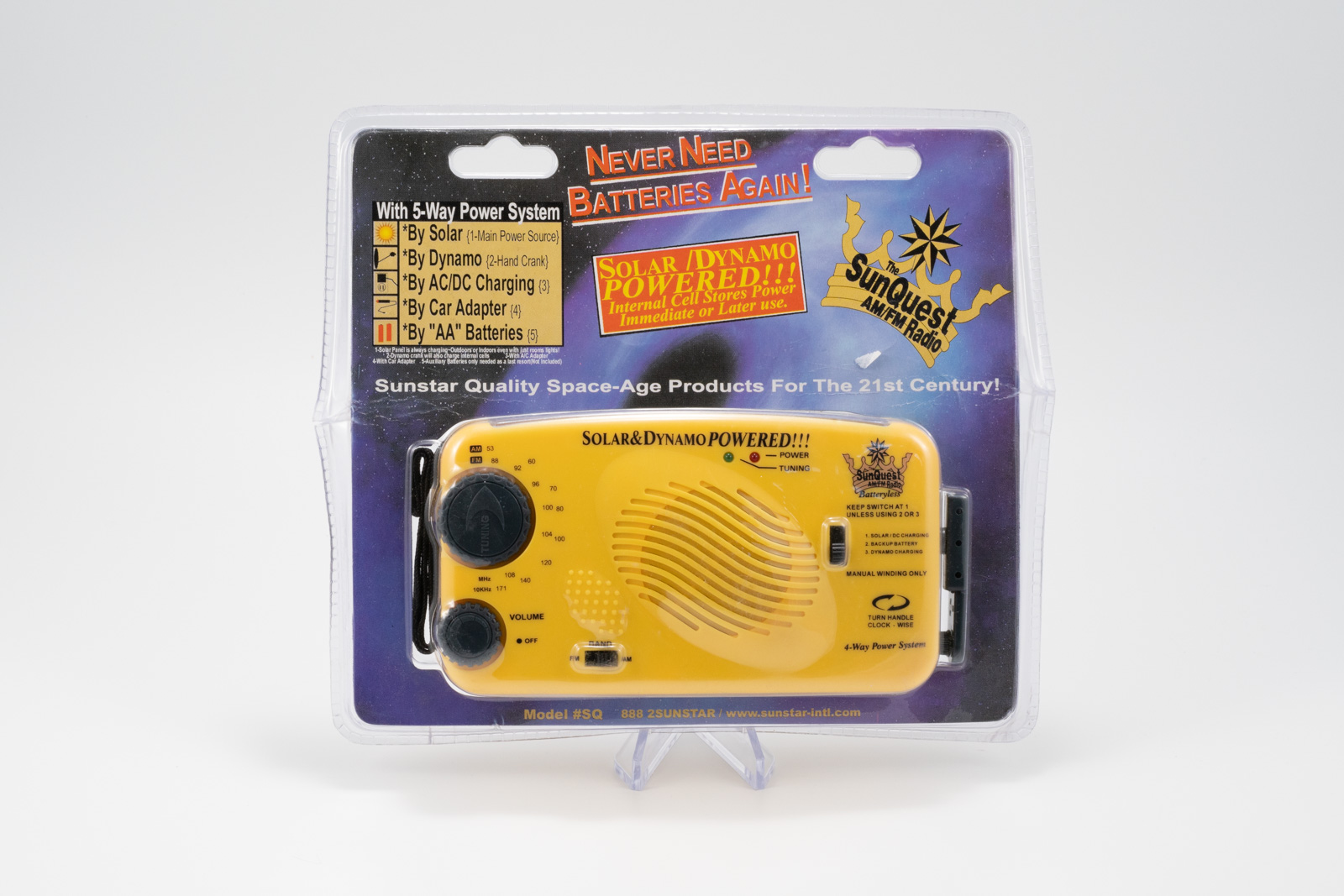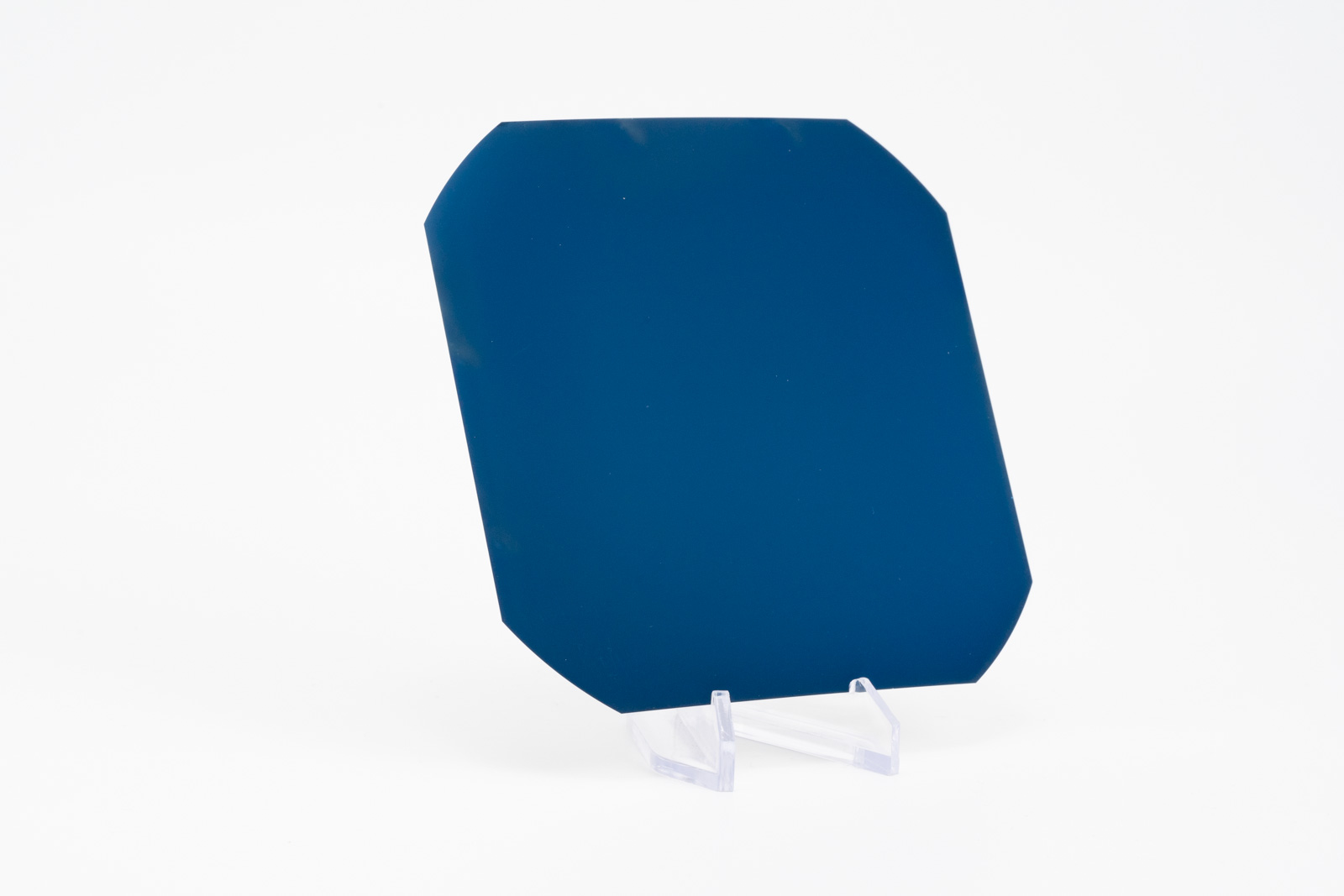Following Hoffman’s successful production and marketing of their 6-transistor Model 706 Trans-Solar radios they announced on July 11th, 1961 this smaller AM band 9-transistor Model 709 transistor radio. Initial retail list price was $49.95 and it was available in four cabinet colors (TP-709 – Turquoise), (KP-709 – Black), (BP-709 – Brown / Tan), and (OP-709 – White). Some model numbers were assigned an “X” or “XS” suffix (i.e. OP-709XS).
The cabinets and chassis were made in Japan but the radios were fitted with Hoffman Solar Panels. As was the case with the
706 Trans-Solar models, a side mounted slide switch allowed the user to select either solar power or, when sufficient sun or light was not available, to be powered by the 4 internal non-rechargeable 1-1/2 volt AA size batteries. This compact little radio measured just slightly over 3”x5” and was 1-3/4” thick. It weighed only about 20 ounces including the AA batteries. As was common to most transistor radios at the time, a leather carrying case was also available and a mono earphone could be plugged in a side jack for private listening.
As can be seen in the examples pictured here, several different diffusers covered the solar panel. In addition, the actual solar panel units themselves varied somewhat in assembly and of the individual cells used (note the tan example with the same panel used on the earlier 706 Trans-Solar models!)
During 1962 thousands of persons experienced their first introduction to a solar powered product when the Rexall Drug Stores chain advertised a giveaway beginning in January and continuing thru most of the 1962. Individual stores held weekly drawings for one of these 9-transistor marvels. Newspaper ads enticed customers to come in learn about Rexall’s Super Plenamins (multi-vitamin, multi-mineral supplement) while registering to win one of the TEN THOUSAND radios to be given away. The ads always mentioned the radio as a “$54.95 value” – as compared to the 1961 release price of $49.95 – however a winner also received the optional private earphone and leather carrying case as well as, in most instances, the AA batteries. Newspaper ads often also announced the names of the previous week’s or earlier winners. How exciting it would have been to win one of these special solar radios in 1962 – when in dollars of that year a $55 prize was nothing to sneeze at!
Photographed from the Bill Burkett Collection

